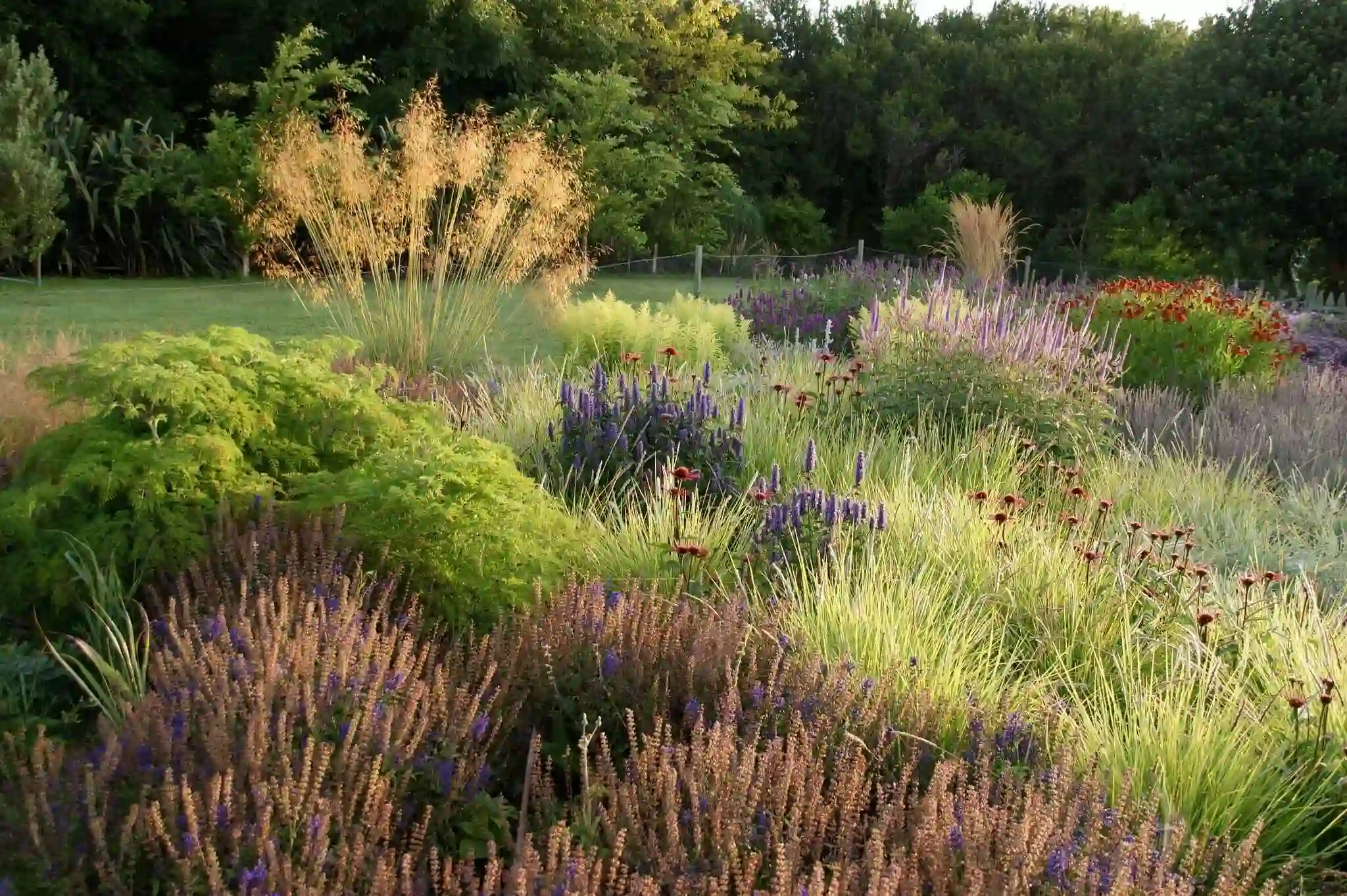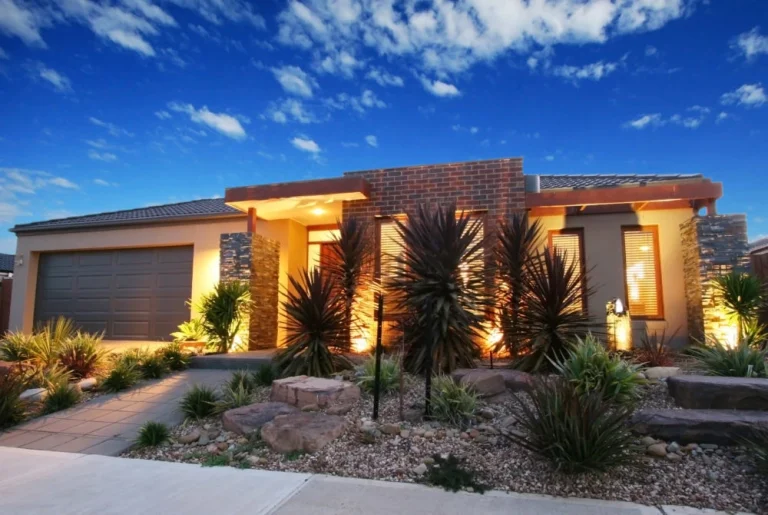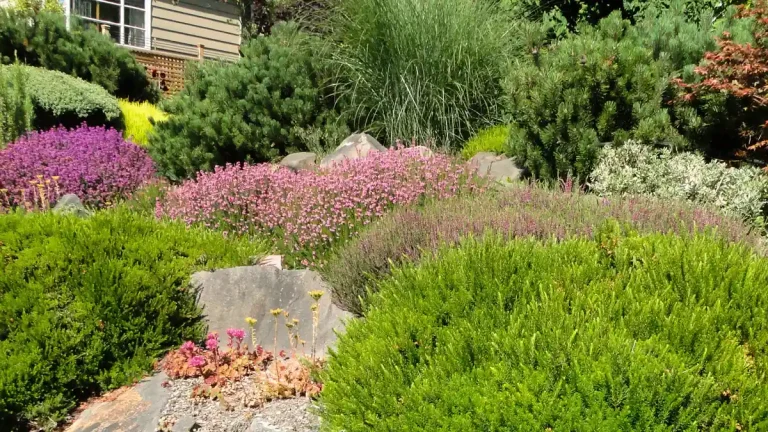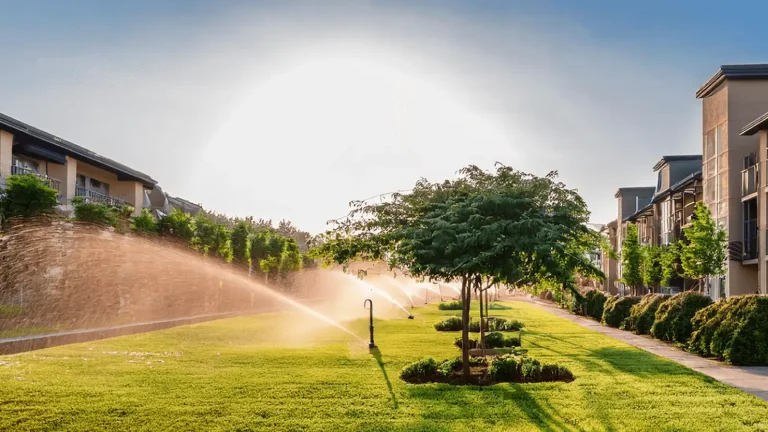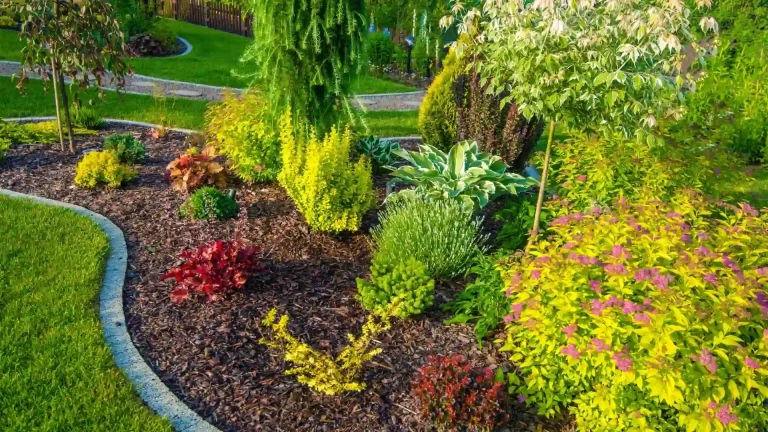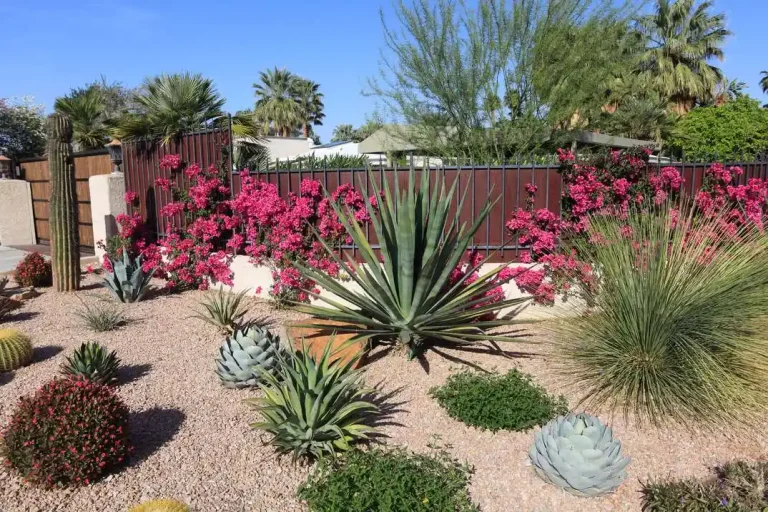Native Plant Landscaping for Upscale Properties: Elegance, Ecology & Value
Design Principles for Upscale Native Landscapes
Layered Planting & Spatial Composition
Upscale landscapes benefit from layered plant compositions, groundcovers, perennials, shrubs, and trees arranged to deliver a sense of depth, texture, and seasonal interest. This layering emulates natural ecosystems but with intention. In a refined design, you might use bold native shrubs or small trees as structural “pillars,” with underplanting in natives that complement their form and seasonality.
Careful spacing and groupings matter: planting massed clusters of a species, interspersing contrasting textures, and ensuring sightline control all help native landscapes appear intentional, not haphazard. Edges and transitions (between beds and lawns or walkways) should be crisp and styled using materials like stone, gravel, or low native hedges to maintain formality.
Soil, Microclimate & Site Matching
One of the critical mistakes in native landscaping is forcing a plant into a site where it does not thrive. Instead, evaluate soil type, pH, drainage, sun/shade, wind exposure, and moisture before selecting species. Choose native plants that naturally occur in those conditions rather than fundamentally altering the site.
Microclimates (cool shade, hot slope, wet low point, dry ridge) should each have tailored palettes. Matching species to microclimates reduces maintenance and increases survival. In luxury settings, subtle grading, rock outcrops, or constructed berms can refine microconditions.
Pathways, Focal Points & Hardscape Integration
In an upscale native landscape, pathways, seating areas, sculptures, water features, and hardscape must be integrated elegantly. Use natural stone, cut-bluestone, or finely textured gravels that harmonize with the plant palette. Let native planting soften edges of hardscape, but maintain clean bounds. Focal specimen plants (standouts in bloom or form) should be placed deliberately, not randomly.
Seasonal Rhythm & Continuity
Native landscapes perform best when planned for seasonal rhythm, flowering peaks, foliage color shifts, seed heads, and natural forms. Even in minimal-maintenance landscapes, you can plan for visual continuity by selecting species with offset bloom times and textural contrast in dormant seasons. Doing so ensures year-round elegance.
Benefits of Native Plant Landscaping for Upscale Properties
Reduced Water, Fertilizer & Maintenance Needs
Because native plants evolved locally, they typically require less supplemental water (once established), minimal fertilization, and fewer pesticides or disease interventions. This reduces operational costs and environmental impact,ct an important value proposition for upscale properties aiming for sustainability credentials.
Resilience, Longevity & Stability
Native species are better adapted to local climate variability, drought, floods, pests, and soil stresses. They tend to establish deeper or more resilient root systems that buffer against storms, erosion, or drought. For luxury properties, that means longevity, fewer replacements, and greater predictability.
Enhanced Biodiversity & Ecological Value
Native plantings support pollinators, birds, insects, and soil microbiota. They help restore ecological connections, improve soil health, and promote a living, breathing landscape rather than sterile ornamentation. Prestige properties benefit from this “living value”, a landscape that contributes positively to biodiversity and ecological heritage.
Differentiated Aesthetic & Market Appeal
A well-done native landscape can be a signature differentiator, distinguishing upscale homes or properties with a modern, sustainable aesthetic. Prospective buyers or guests increasingly favor green credentials. A native landscape is a long-term asset rather than a cost center.
Real‑World Product of Native Plant Landscaping
Below are five product or plant material examples suited to upscale native landscaping. Each entry includes features, benefits, use-case context, and buying guidance.
1. Aquilegia Canadensis (Red Columbine)
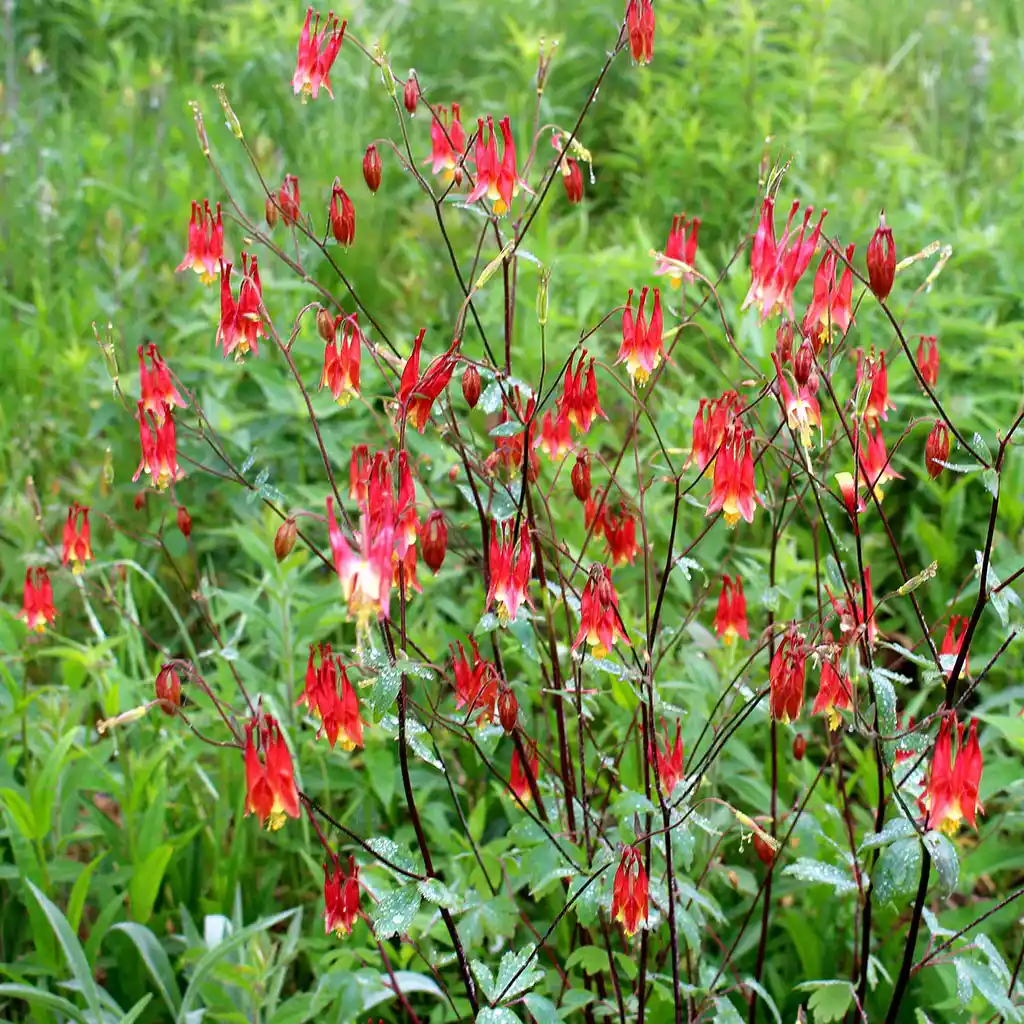
Aquilegia Canadensis is a native perennial wildflower with elegant red-and-yellow bell-shaped blooms. It forms natural drifts in woodland-edge settings.
Features & Benefits:
-
Tolerates shade to partial sun, ideal for under-canopy planting.
-
Provides bloom in late spring to early summer.
-
Attracts pollinators such as hummingbirds and bees.
-
Low-maintenance once established; dies back to the crown during dormancy.
Use Case / Problem Solved:
In a luxury landscape with mature canopy trees and shady understory, Aquilegia canadensis brings a soft, naturalistic understory layer. For guests strolling paths, its airy blooms add color without overwhelming. It fills gaps where conventional ornamentals might struggle under shade.
Where to Buy & How to Buy:
This species is offered through native plant nurseries, wildflower seed suppliers, or specialized e‑commerce sites (e.g., the product link above). Use propagation plugs or container plants rather than bare seed for upscale installations. In many regions, local native-plant nurseries supply stock grown from local ecotypes.
2. Queen of the Prairie Wildflower Seeds
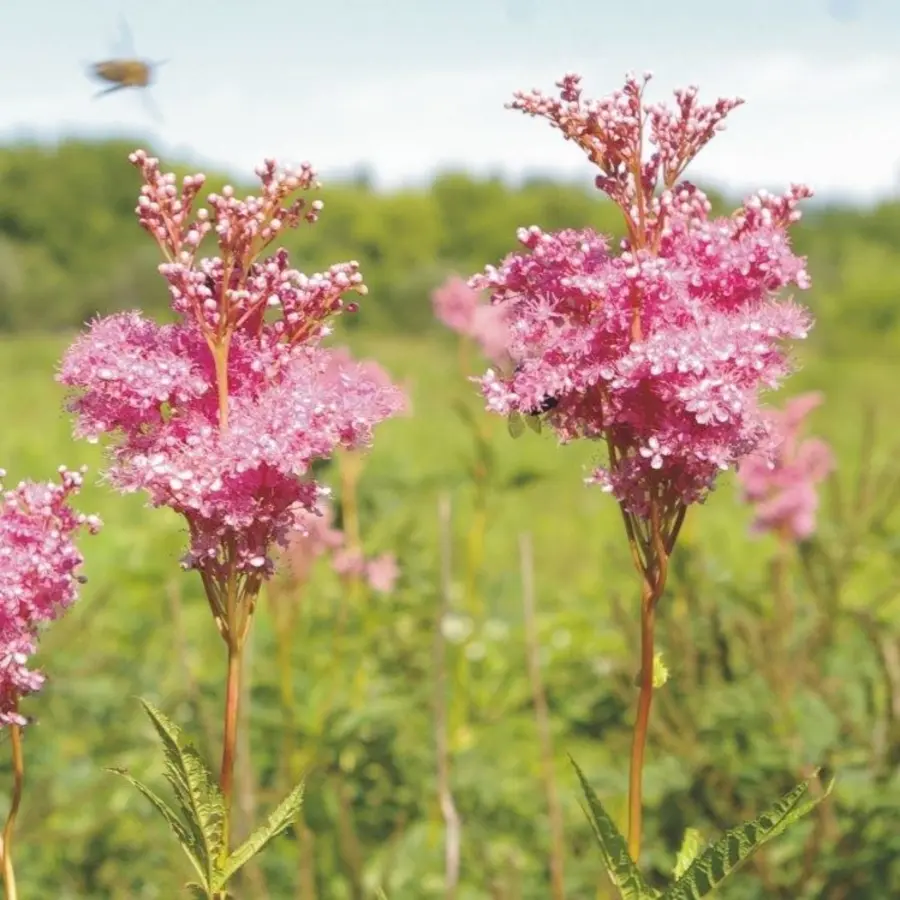
Queen of the Prairie is a packet of wildflower seeds specialized for upscale native meadow or mass plantings.
Features & Benefits:
-
Mixture includes multiple species suited to meadow, streamedge, or moist zones.
-
Designed for “plug-and-blend” mass seeding across zones.
-
Economical for large-scale installations and cost-effective compared to full plants.
Use Case / Problem Solved:
For expansive properties where native meadows or pollinator fields are part of the design, Queen of the Prairie Wildflower Seeds simplify large-area establishment. Instead of buying expensive container plants, you seed large zones with an attractive mixture. Over time, plants fill in and mature, delivering high impact at lower cost.
Where to Buy & How to Buy:
Available via seed retailers and wildflower suppliers. Be sure to match the seed mix to your local ecotype and soil conditions. Use proper soil prep and weed suppression (e.,g. shallow till, pre-emergent, mulch) before seeding in an upscale property context.
3. Idaho Wildflower Seed Collection
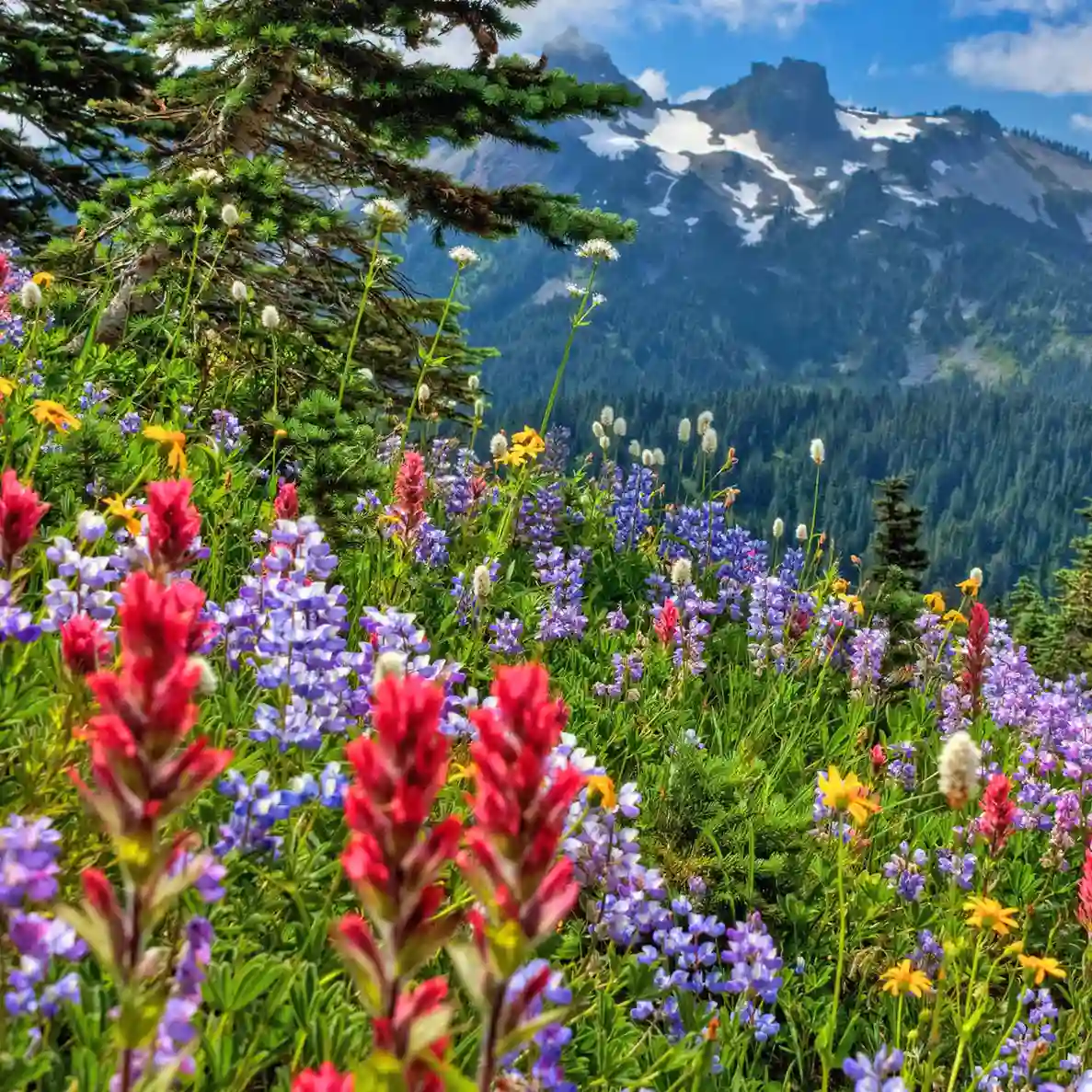
Idaho Wildflower is a curated mix of wildflower species native to Idaho (or analogous temperate climates).
Features & Benefits:
-
Balanced mix for full-season interest (early, mid, late bloomers).
-
Designed for rugged, low-maintenance landscapes.
-
Seeds chosen to complement native grasses and shrubby components.
Use Case / Problem Solved:
In properties with upland slopes or meadows that require visually continuous planting, this Idaho Wildflower Seed Collection offers an integrated palette. Instead of patchy annuals or high-maintenance ornamentals, the seed mix yields natural-looking, low-input meadow plantings that mature gracefully over the years.
Where to Buy & How to Buy:
Available from wildflower seed houses; ensure you choose the variant suited to your climate/hardiness zone. On upscale properties, combine seed installation with invasive control, select soil amendments, and irrigation support during establishment.
4. Seedballs Ox-Eye Daisy Seedbombs
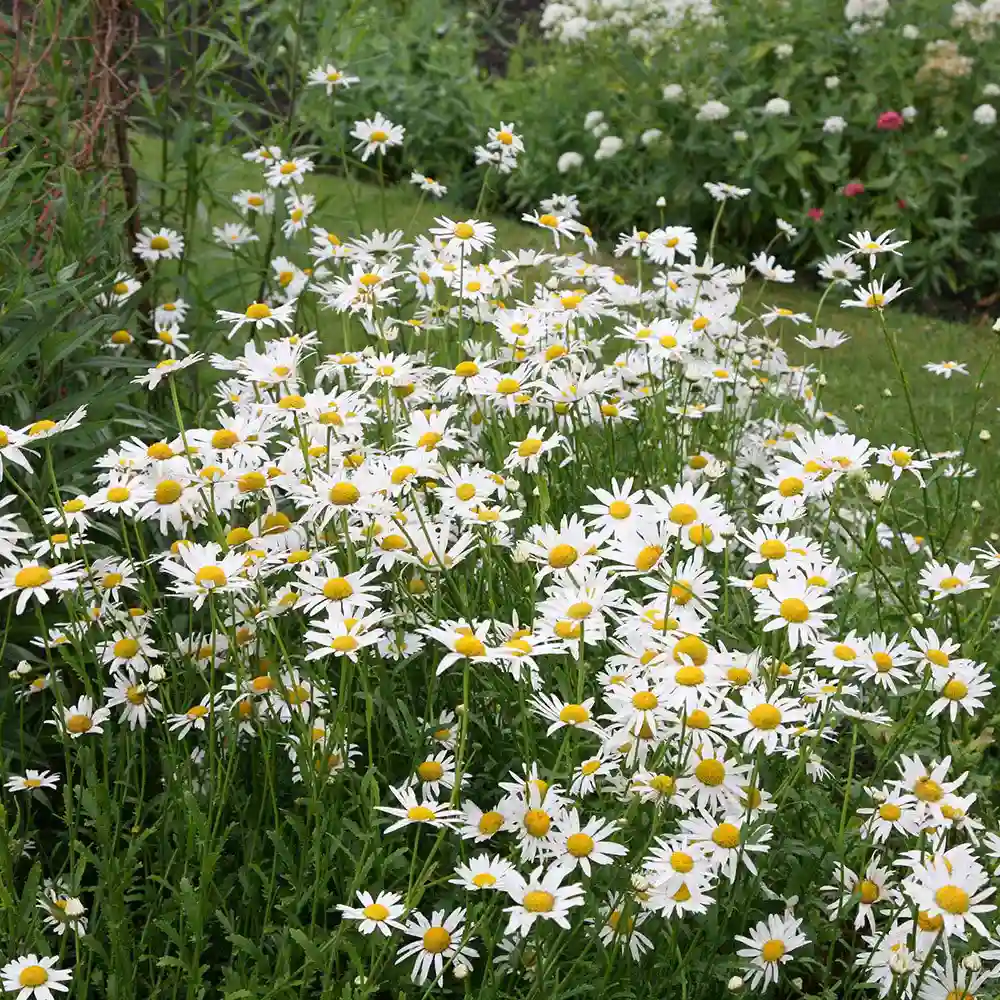
Ox-Eye Daisy Seed Bombs are pre-packed seedballs (coated clay/compost) containing Leucanthemum vulgare (Ox-Eye Daisy) seeds encapsulated for easier broadcast planting.
Features & Benefits:
-
Ball form protects seeds from birds and provides micro-nutrient support.
-
Easy to scatter by hand or drone in large landscapes.
-
Delivers charming daisy blooms when mature.
Use Case / Problem Solved:
When incorporating dappled daisy fields or accent drifts, Seedball daisy seedbombs make seeding rapid and visually consistent. On large estates or sloped zones, broadcast seedballs rather than planting individuals to speed installation. The daisy form delivers a classic appearance but integrates with naturalistic palettes.
Where to Buy & How to Buy:
Available via botanical gift shops or online outlets. For upscale landscaping, coordinate with installation planners to ensure seedball rates, timing (fall or spring), and site prep are optimized.
5. Urban Greens Australian Native Everlasting Daisies Grow Kit
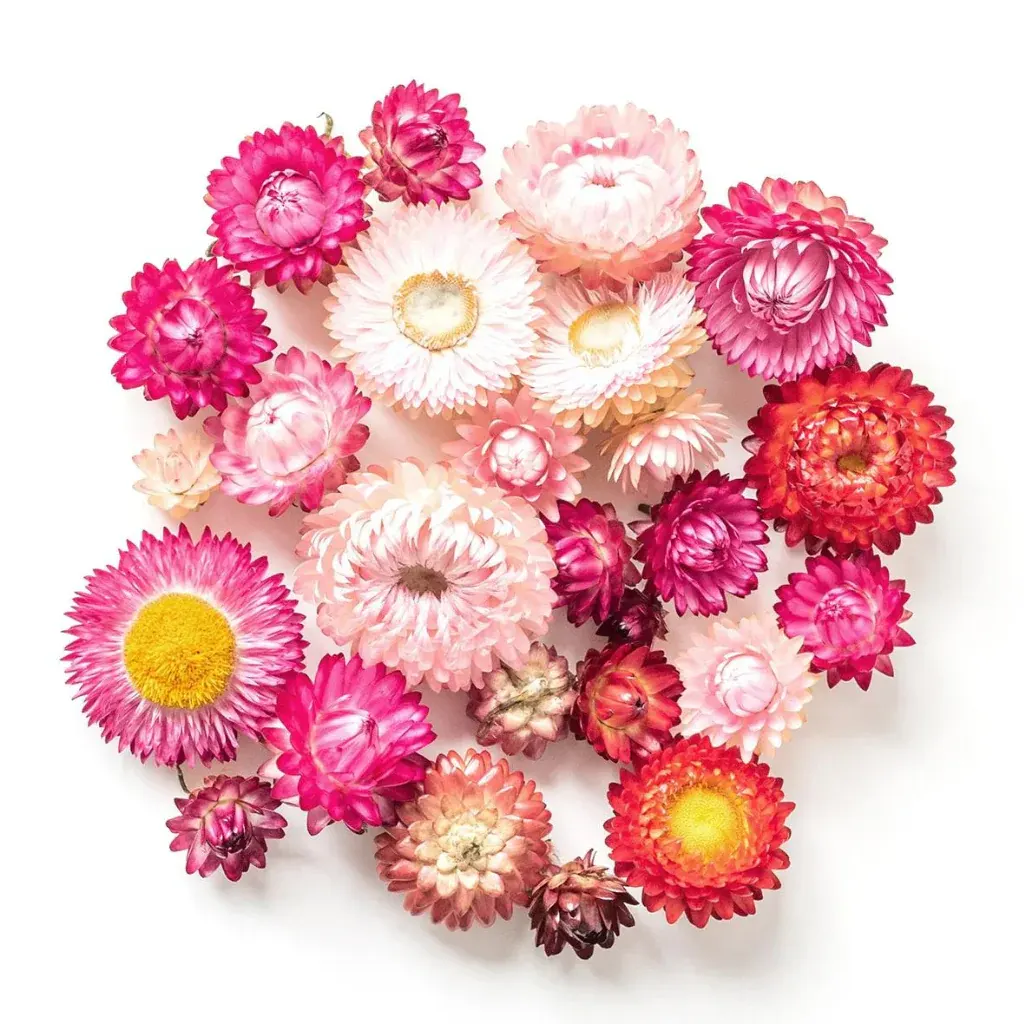
Urban Greens Australian Native Everlasting Daisies is a kit containing native Australian everlasting daisy seed, peat plugs, and starter mix.
Features & Benefits:
-
All-in-one kit for small zones or accent gardens.
-
Includes native Australian daisy species, suitable for dry climates.
-
Good for container or in-ground starter of native front-garden zones.
Use Case / Problem Solved:
In upscale properties in warm, dry climates (e.g., Australia, Mediterranean zones), using everlasting daisy kits near entryways, patios, or walls provides vibrant color with low maintenance. The kit ensures consistent germination and aesthetic success in refined settings.
Where to Buy & How to Buy:
Marketed through native-plant retailers, horticultural boutiques, or e-commerce in Australasia. Use the product link above to find sellers. For upscale projects, scale kits into group plantings or edge transitions.
How to Use These Products in an Upscale Native Landscape
Each product or plant material fits into different phases:
-
Specimen or planting zones: Use container plants (like Aquilegia canadensis) in foundation beds, shrub understories, or near focal points.
-
Meadow zones or fields: Use Queen of the Prairie wildflower or Idaho wildflower seed collections to seed large areas.
-
Accent drifts & broadcast planting: Use Seedball daisy seedbombs to scatter daisy accents.
-
Dry-climate zones or specialty corners: Employ kits like Urban Greens Everlasting Daisies for controlled, ornamental impact.
All of these should be integrated with structural shrubs, native grasses, and hardscape—never used in isolation. Proper soil prep, weed control, and irrigation during establishment are critical.
Installation Best Practices & Integration
Soil Preparation & Weed Clearance
Native plants rarely succeed in weedy or competing soils. Before planting or seeding, remove aggressive exotics, solarize, or burn off previous turf. Use minimal soil disturbance and avoid over-amending with high-nutrient composts, which favor weeds. Maintain a light layer of native‑compatible mulch after planting.
Irrigation During Establishment
While natives need less water long-term, they require consistent moisture for the first 1–2 years. Use drip irrigation or emitter lines during establishment, not overhead sprinklers. After establishment, reduce irrigation and let plants acclimate to local rainfall patterns.
Phased Planting & Sequencing
Install structural elements first: trees, shrubs, soil grading, hardscape, and then fill with groundcovers, perennials, and broadcast zones. This sequence ensures infrastructure (drainage, irrigation, soil micro-grades) is stable before delicate plantings.
Pruning, Grooming & Minimal Intervention
Native landscapes demand a more restrained hand than cultivated traditional gardens. Avoid shearing or shaping; instead, prune only for safety, structural integrity, or removal of dead material. Let natural forms prevail. Use selective removal of seed heads only where necessary (paths, visibility). Allow leaf litter and natural mulch to persist under shrubs to feetfeed thel.
Monitoring, Adaptive Management & Invasive Control
Check for invasive or aggressive volunteer species each season. Remove promptly before they dominate. Monitor plant health, soil moisture, plant density, and gap or die-off. Replace or infill as needed. Adapt species palette over time based on performance.
Selecting a Native Landscape Provider or Product Source
Criteria for Providers
-
Experience in local native species and ecotypes
-
Aesthetic design sensibility (not just ecological, but formal balance)
-
Capability in large-scale installation and maintenance
-
Proven knowledge in irrigation, propagation, and sand oil matching
-
Ability to supply locally sourced seed, plug stock, or custom mixes
Sourcing Plant Material
Use nurseries specializing in native plants or restoration species. When that’s unavailable, seed houses or plug providers can supply customized mixes (as in the North Fork Native Plants catalog). Request certified local ecotype seed when possible. For container stock, check that root forms are healthy and non‑potbound.
Buying Strategic Materials
Consider seed mixes and kits (as above) for scalable cost efficiency. But for high-visibility or formal zones, use container plants, not just seed. Use kits for peripheral zones, meadows, or accent strips.
Long-Term Maintenance, Monitoring & Refinement
Yearly Evaluation & Rotation
Each year, evaluate species’ success. Some may underperform and need replacement or reassignment to another zone. Rotate seed mixes or plug plantings to rejuvenate thinning areas.
Adaptive Irrigation Adjustments
Over the years, irrigation needs have declined. Gradually phase down supplemental water in zones that stabilize with rainfall. Monitor with soil moisture sensors if possible.
Pruning & Dead Material Management
Safely remove dead or disease-affected parts. In meadows, selectively mow or trim in late fall to manage annual species. In aesthetic zones, lightly cut back perennials after seed dispersal, but maintain structural integrity.
Soil & Mulch Management
Top-dress lightly with local mulch or leaf litter (not rich composts). Avoid chemical fertilization; native plants prefer lean soils. Use mulching to suppress weeds, conserve moisture, and maintain soil microclimate.
Use‑Case Scenarios in Upscale Properties
Grand Entry Courtyard
A formal entry courtyard might combine native structural shrubs (e.g., native selections, or nativars) with underplanting of native perennials and groundcovers. Use specimen natives in containers or raised beds to frame the entry. Keep clean edges with stone pavers and accent lighting. In such high-visibility zones, use container-grown natives (e.g., Aquilegia canadensis) for immediate impact.
Meadow Buffer Zone
Beyond formal gardens, a meadow buffer planted with wildflower seed mixes like Queen of the Prairie Wildflower or Idaho Wildflower Collection serves as a soft, ecological transition. It screens views, supports pollinators, and offers seasonal bloom without high maintenance. The elegance lies in how the meadow integrates with formal garden edges, not in randomness.
Dry Zonal Accent Areas
Areas not suited for irrigated lawn,s e.g,. Slopes, rocky zones, and dry corners can be planted with kits like Urban Greens Everlasting Daisies or Seedball daisy bombs to bring persistent floral interest with minimal water input. These zones often become signature accents.
Canopy Understories & Shade Gardens
In shaded woodland zones beneath established trees, use shade-tolerant natives like Aquilegia canadensis and companion understory species. These areas often get overlooked; with design, they provide cool, lush contrast with low maintenance.
Luxury Amenity Zones
Near pools, patios, or walkways, border zones with native shrubs or container natives, interspersed with perennials. Use clean hardscape edges and discrete irrigation. In such zones, the native landscape becomes part of the luxury experience, lush but functional.
Frequently Asked Questions
Q1: Do native landscapes look “wild” instead of refined?
A1: With good design, layered planting, crisp edges, focal specimens, and integrated hardscape, a native landscape can look elegant, intentional, and high-end. The wildness is contained within a structured framework.
Q2: How long before native plantings look “full” and mature?
A2: Typically, within 2–4 growing seasons, you’ll see substantial fill and cohesion. Some species may take longer. During the early years, supplemental placement of container plants helps mask gaps and accelerate the look.
Q3: Can upscale properties in tropical climates use native landscaping too?
A3: Absolutely. The principles apply: select local native species suited to your climate (rainfall, soil, sun), use a layered design, and manage installation carefully. Native tropical palettes may differ from temperate ones, but yield the same advantages of sustainability, resilience, and prestige.
